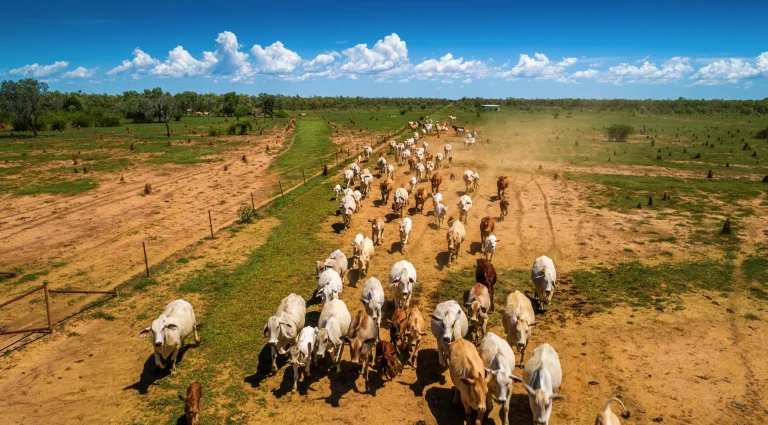Proven Strategies for Increasing Profitability in Crop Farming
Modern crop farming faces unprecedented challenges from climate variability, market volatility, and rising input costs. However, forward-thinking agricultural producers are implementing innovative strategies for increasing profitability in crop farming that transform these challenges into opportunities. At Agribusiness Horizons, we work with successful farming operations across Australia and internationally to identify and implement the most effective approaches to maximize agricultural returns. Whether you’re managing a family farm or overseeing large-scale commercial operations, understanding these proven profitability strategies can make the difference between surviving and thriving in today’s competitive agricultural landscape.
This comprehensive guide examines the most effective methods for enhancing crop farming profitability, from precision agriculture techniques to strategic crop selection and market positioning. We’ll explore how successful farmers are adapting their operations to current market conditions while building resilience for future challenges.
The Evolution of Modern Crop Farming Economics
Agricultural economics have transformed dramatically over the past decade, with successful farmers moving beyond traditional production models toward integrated profitability systems. The shift from volume-based to value-based farming represents a fundamental change in how agricultural operations approach revenue generation.
Today’s most profitable crop farming operations combine traditional agricultural wisdom with modern technology and strategic business planning. This evolution reflects changing consumer demands, environmental considerations, and the need for sustainable farming practices that maintain long-term soil health and productivity.
The integration of data-driven decision making has become essential for competitive crop farming. Farmers who embrace analytical approaches to field management, input optimization, and market timing consistently outperform those relying solely on traditional methods. This technological adoption, combined with strategic land use planning, creates multiple pathways to enhanced profitability.
Strategic Crop Selection and Diversification
Successful crop selection forms the foundation of profitable farming operations. The most effective strategies for increasing profitability in crop farming begin with matching crop choices to local soil conditions, climate patterns, and market opportunities. Smart farmers analyze historical yield data, soil composition, and regional market demand before making planting decisions.
Diversification strategies reduce risk while creating multiple revenue streams. Rather than relying on single crops, profitable operations often combine complementary crops that utilize different growing seasons, soil nutrients, and market windows. This approach provides protection against commodity price fluctuations and weather-related losses while maximizing land utilization throughout the year.
Specialty crop integration offers premium pricing opportunities for farmers willing to meet specific market demands. High-value crops often require more intensive management but can generate significantly higher returns per hectare than traditional commodity crops. The key lies in identifying market niches where quality and consistency command premium prices.
Rotation planning enhances both soil health and profitability by optimizing nutrient cycling and reducing pest pressures. Strategic crop rotations can eliminate the need for expensive chemical inputs while maintaining or improving yields. This approach demonstrates how environmental stewardship and profitability can work together effectively.
Precision Agriculture and Technology Integration
Modern precision agriculture technologies enable farmers to optimize inputs at the field level, dramatically improving efficiency and profitability. Variable rate application systems ensure that fertilizers, seeds, and crop protection products are applied precisely where needed, eliminating waste and maximizing effectiveness.
Soil testing and nutrient management programs provide the foundation for precision agriculture success. Regular soil analysis reveals specific nutrient deficiencies and pH imbalances that, when corrected, can significantly boost yields. This targeted approach to soil health management often produces immediate returns through improved crop performance.
GPS-guided equipment reduces overlap and ensures consistent field operations, leading to measurable fuel savings and improved crop establishment. The precision offered by modern guidance systems translates directly into cost savings and yield improvements across large farming operations.
Data management systems help farmers track field performance, input costs, and profitability at the paddock level. This detailed information enables continuous improvement in farming practices and helps identify the most profitable areas of the operation for future investment.
Input Cost Optimization Strategies
Effective input cost management requires a systematic approach to purchasing, application timing, and product selection. The most profitable farmers treat input costs as investments rather than expenses, carefully analyzing the return on investment for each input decision.
Bulk purchasing and group buying arrangements can significantly reduce input costs while maintaining product quality. Many successful farming operations coordinate with neighbors or join purchasing cooperatives to access better pricing on fertilizers, seeds, and crop protection products.
Timing strategies for input purchases take advantage of seasonal price variations and early-pay discounts. Strategic inventory management allows farmers to purchase inputs when prices are favorable while ensuring adequate supplies for critical application windows.
Alternative input sources, including organic fertilizers and biological crop protection products, can reduce costs while meeting market demands for sustainable production. These alternatives often provide additional benefits such as improved soil health and reduced environmental impact.
Market Positioning and Value-Added Opportunities
Direct marketing strategies enable farmers to capture more value from their production by selling directly to consumers or processors. Farm-gate sales, farmers’ markets, and community-supported agriculture programs can significantly increase per-unit returns compared to commodity marketing.
Contract farming arrangements provide price stability and guaranteed markets for production. Forward contracting allows farmers to lock in profitable prices while reducing market risk. These arrangements often include quality premiums for meeting specific production standards.
Value-added processing opportunities can multiply the profitability of raw agricultural products. On-farm processing facilities, from grain cleaning to value-added food products, create additional revenue streams while capturing more of the final product value.
Brand development and marketing create differentiation in competitive markets. Farmers who develop strong brands around quality, sustainability, or local production can command premium prices for their products.
Water Management and Irrigation Efficiency
Water represents one of the most critical inputs in crop production, and efficient water management directly impacts profitability. Modern irrigation systems provide precise water application while minimizing waste and energy costs.
Soil moisture monitoring systems enable farmers to apply water only when needed, reducing irrigation costs while maintaining optimal growing conditions. These systems prevent both under-watering and over-watering, both of which can significantly impact yields and profitability.
Drainage management ensures that excess water doesn’t limit crop production during wet periods. Proper drainage systems protect investments in seeds, fertilizers, and crop protection products while maintaining field accessibility for critical operations.
Water storage and conservation strategies provide security during dry periods while reducing pumping costs. On-farm storage allows farmers to capture water when it’s available and apply it when crops need it most.
Soil Health and Sustainability Practices
Soil health directly impacts crop productivity and long-term farm profitability. Sustainable farming practices that build soil organic matter and improve soil structure create lasting improvements in crop performance while reducing input requirements.
Cover crop integration provides multiple benefits including nitrogen fixation, erosion control, and improved soil structure. Strategic cover crop selection can reduce fertilizer costs while improving soil health and subsequent crop yields.
Reduced tillage practices lower fuel costs and equipment wear while improving soil structure and water infiltration. These practices often require initial adjustments but typically result in long-term cost savings and yield improvements.
Organic matter management through composting and residue management builds soil fertility naturally while reducing dependence on purchased fertilizers. This approach creates a positive cycle of soil improvement and cost reduction.
Comparison of Profitability Enhancement Strategies
| Strategy Category | Implementation Complexity | Initial Investment | Payback Period | Long-term Benefits |
|---|---|---|---|---|
| Precision Agriculture | Moderate | High | Medium | Excellent |
| Crop Diversification | Low | Low | Short | Good |
| Direct Marketing | High | Medium | Variable | Excellent |
| Water Management | Moderate | High | Medium | Excellent |
| Soil Health Programs | Low | Low | Long | Excellent |
| Technology Integration | High | High | Medium | Good |
How Agribusiness Horizons Supports Profitable Farming Operations
At Agribusiness Horizons, we understand that implementing strategies for increasing profitability in crop farming requires more than just technical knowledge. Our comprehensive approach combines agricultural expertise with financial analysis to help farming operations maximize their potential.
Our strategic advisory services help farmers identify the most promising opportunities for their specific operations. We analyze soil conditions, climate patterns, market opportunities, and financial resources to develop customized profitability enhancement plans. This tailored approach ensures that recommendations align with each operation’s unique circumstances and goals.
We provide detailed financial modeling that quantifies the potential returns from different profitability strategies. Our analysis includes cash flow projections, return on investment calculations, and risk assessments that help farmers make informed decisions about where to invest their resources for maximum impact.
Our market intelligence services keep farming operations informed about emerging opportunities and market trends. We track commodity prices, consumer preferences, and regulatory changes that could impact farm profitability. This information helps farmers time their marketing decisions and identify new revenue opportunities.
Through our extensive network of agricultural professionals, we connect farming operations with the expertise they need to implement advanced strategies. Whether it’s precision agriculture specialists, soil scientists, or marketing experts, we help farmers access the knowledge and resources necessary for success.
Future Trends in Agricultural Profitability
The agricultural industry continues to evolve rapidly, with new technologies and market opportunities emerging regularly. Successful farmers are positioning themselves to capitalize on these trends while maintaining the flexibility to adapt to changing conditions.
Automation and robotics are beginning to transform field operations, offering the potential for significant labor cost savings and improved precision. Early adopters of these technologies are gaining competitive advantages through reduced operating costs and improved consistency.
Sustainability certifications and environmental credits are creating new revenue streams for farmers who implement environmentally beneficial practices. Carbon credit programs, biodiversity initiatives, and sustainable certification premiums are becoming increasingly valuable components of farm profitability.
Data analytics and artificial intelligence are enabling more sophisticated decision-making processes. Farmers who embrace these technologies can optimize operations in ways that were previously impossible, leading to improved efficiency and profitability.
Consumer demand for transparency and traceability is creating opportunities for farmers who can demonstrate responsible production practices. This trend toward conscious consumption is driving premium prices for products that meet specific environmental and social standards.
Conclusion
The landscape of crop farming profitability continues to evolve, presenting both challenges and opportunities for agricultural producers. Successful implementation of strategies for increasing profitability in crop farming requires a comprehensive approach that combines traditional agricultural knowledge with modern technology and strategic business planning.
The most profitable farming operations are those that view their enterprises holistically, considering not just production efficiency but also market positioning, risk management, and long-term sustainability. By implementing the strategies outlined in this guide, farmers can build resilient operations that thrive in changing market conditions.
As you consider which profitability strategies might benefit your operation, think about these key questions: What unique advantages does your farming operation possess that could be leveraged for higher returns? How might emerging technologies transform your approach to crop production and marketing? What partnerships or collaborations could enhance your operation’s profitability potential?
The path to enhanced agricultural profitability is rarely simple, but with the right strategies and expert guidance, farming operations can achieve remarkable improvements in their financial performance. Contact Agribusiness Horizons today to discuss how we can help you implement proven strategies for increasing profitability in crop farming tailored to your specific operation and goals.



